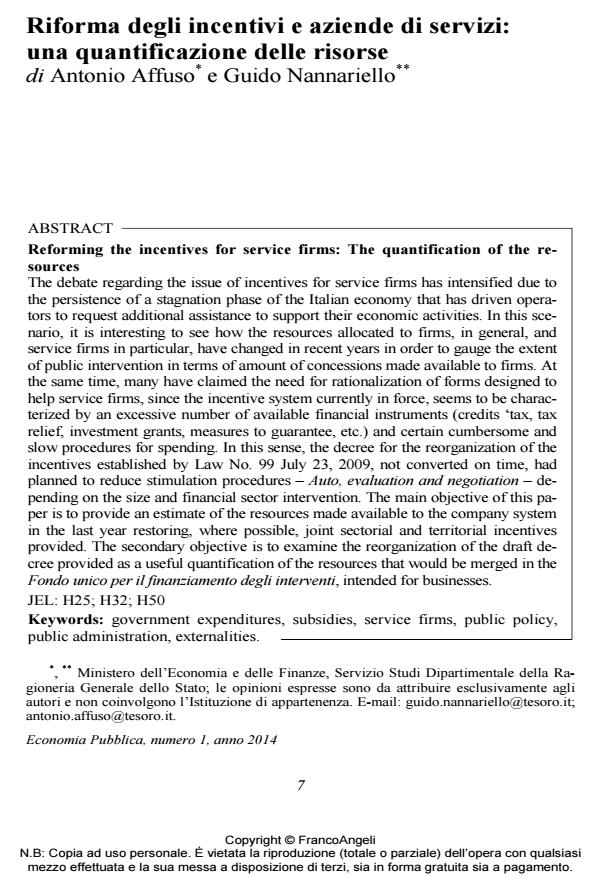Riforma degli incentivi e aziende di servizi: una quantificazione delle risorse
Titolo Rivista ECONOMIA PUBBLICA
Autori/Curatori Antonio Affuso, Guido Nannariello
Anno di pubblicazione 2014 Fascicolo 2014/1
Lingua Italiano Numero pagine 21 P. 7-27 Dimensione file 211 KB
DOI 10.3280/EP2014-001002
Il DOI è il codice a barre della proprietà intellettuale: per saperne di più
clicca qui
Qui sotto puoi vedere in anteprima la prima pagina di questo articolo.
Se questo articolo ti interessa, lo puoi acquistare (e scaricare in formato pdf) seguendo le facili indicazioni per acquistare il download credit. Acquista Download Credits per scaricare questo Articolo in formato PDF

FrancoAngeli è membro della Publishers International Linking Association, Inc (PILA)associazione indipendente e non profit per facilitare (attraverso i servizi tecnologici implementati da CrossRef.org) l’accesso degli studiosi ai contenuti digitali nelle pubblicazioni professionali e scientifiche
The debate regarding the issue of incentives for service firms has intensified due to the persistence of a stagnation phase of the Italian economy that has driven operators to request additional assistance to support their economic activities. In this scenario, it is interesting to see how the resources allocated to firms, in general, and service firms in particular, have changed in recent years in order to gauge the extent of public intervention in terms of amount of concessions made available to firms. At the same time, many have claimed the need for rationalization of forms designed to help service firms, since the incentive system currently in force, seems to be characterized by an excessive number of available financial instruments (credits ‘tax, tax relief, investment grants, measures to guarantee, etc.) and certain cumbersome and slow procedures for spending. In this sense, the decree for the reorganization of the incentives established by Law No. 99 July 23, 2009, not converted on time, had planned to reduce stimulation procedures - Auto, evaluation and negotiation - depending on the size and financial sector intervention. The main objective of this paper is to provide an estimate of the resources made available to the company system in the last year restoring, where possible, joint sectorial and territorial incentives provided. The secondary objective is to examine the reorganization of the draft decree provided as a useful quantification of the resources that would be merged in the Fondo unico per il finanziamento degli interventi, intended for businesses.
Parole chiave:Government expenditures, subsidies, service firms, public policy, public administration, externalities.
Jel codes:H25; H32; H50
Antonio Affuso, Guido Nannariello, Riforma degli incentivi e aziende di servizi: una quantificazione delle risorse in "ECONOMIA PUBBLICA " 1/2014, pp 7-27, DOI: 10.3280/EP2014-001002